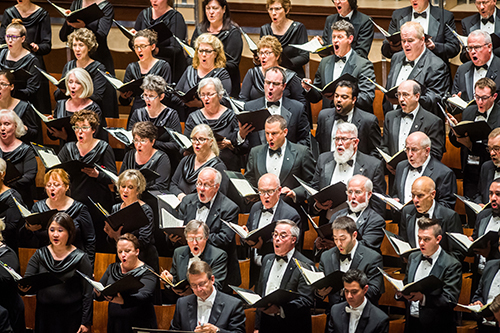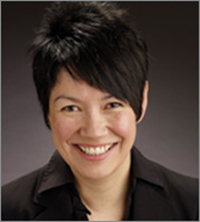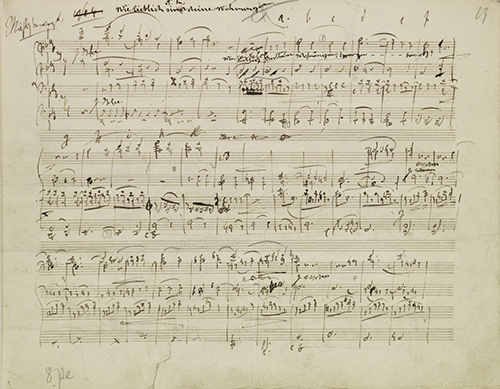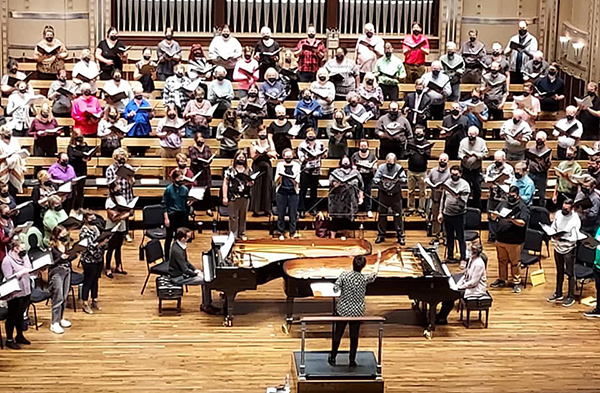by Mike Telin

On Thursday, October 28 at 7:00 pm, the Cleveland Orchestra Chorus under the direction of Lisa Wong will return to the Mandel Concert Hall Stage for a performance of Brahms’ Ein deutsches Requiem. The evening will feature soprano Andrea Carroll, baritone Chris Kenney, and pianists Daniel Overly and Carolyn Warner. Tickets are available online. Click here for COVID-19 protocols.
I spoke to Lisa Wong by telephone and began by asking her why she selected the Brahms for the first Chorus concert in over 18 months.
Lisa Wong: Part of it was thinking practically. When we were scheduling the season, the vaccines were just starting to roll out and we weren’t sure what the situation would be this fall. So we looked for a piece that would work with piano or organ — something that wouldn’t involve the full orchestra but would still be substantive for the chorus. So, we came to the two-piano version of the Brahms Requiem. That was the practical thinking behind the choice.
But thinking programmatically, I think that this piece, because of its focus on the living and its intention of being a sort of comfort for the living, a balm for the living, makes it the perfect choice for this unique moment in time.
Mike Telin: Because it is for the living, is that how it differs from a Roman Catholic Requiem?
LW: Yes. It is not a setting of the Requiem Mass at all, nor is it a German translation of the Mass. Brahms chose Biblical texts, apocryphal texts, that were intended to be, as I mentioned, a comfort for the living. For example, the Latin Requiem Mass opens with “Grant unto them eternal rest,” speaking of the dead. And the Brahms opens with “Blessed are they who carry grief, they shall be comforted.” And the texts go on in that way. It’s not until the final movement that we hear “Blessed are the dead.” And when we hear it, it’s not with this fear or trembling that we sometimes hear in other Requiems like the Verdi Requiem.
It’s also not with an idea of salvation behind it. Brahms suggests “Blessed are the dead that they will be released or freed from their earthly labors or earthly work.” So, it’s a humanistic view, maybe even a secular view, even though they are obviously Biblical texts.
I think it’s a very personal view and that to me makes the two-piano version even more appropriate in some ways. I shouldn’t say appropriate, but it does provide a new lens to see this intimate, personal work.

LW: That’s right. I think it was very common at the time for Brahms to make these piano-four-hand versions himself. He was a pianist, and this was sort of a practical way for him to share his larger works with friends or colleagues, and maybe toss some ideas around. And he could also share them with conductors as a way to shop the piece around when he was looking for a premiere. It couldn’t be done with recordings or anything like that, so this was a practical way for Brahms to do this, and he did it with many of his pieces, including the Requiem.
MT: The piano-duo version is more than just an orchestral reduction.
LW: It is. But for this performance we’ve taken Brahms’ own version and made a few adaptations. One is that we are using two pianos rather than piano-four-hands, and I think it will produce a preferable sonority with a large chorus in a large space. I also think we’ll get a more beautiful sound with two instruments.
In Brahms’ version he included the parts that the chorus sings, thinking that if he were sharing the work with friends there wouldn’t be a chorus on hand. And there are other things that we have taken out because we will have the chorus.
But it is quite different from a simple reduction and it allows us to hear the many intricacies and delicacies of the work.

Wie lieblich sind deine Wohnungen in Brahms’ manuscript
MT: What challenges does the piece present?
LW: One of the biggest challenges for us is that the chorus hasn’t been singing together for the past year and a half. And that is another reason we chose this work — it’s quite a vocal workout to say the least, and it’s my hope that this will help to get everyone singing beautifully again.
Separately from that, there’s just no place for the chorus to rest — they sing in every movement and they sing in extremes. There are sections that are quite bold and require almost an athletic singing. And there are other moments that are tender, so they have to be able to sing the full range of colors, of emotions, and they are exposed because they are not with an orchestra — they are more front-and-center.

LW: We’re right around 120. But our setup will be a little bit different than usual because we won’t have the orchestra and we’re able to use the full space. Some members will be on risers as they usually would be, and others will be on the stage floor where the orchestra would typically be.
Visually it looks preferable to me, but it also allows us to distance a little bit. The chorus is 100% vaccinated, but we are still distancing about three feet from one another and everyone will be wearing masks that are designed for singing. They’re made of a thicker material but they allow us to breathe easier.
MT: Have you worked with Andrea Carroll and Chris Kenney in the past?
LW: They are both new to me, but we have a terrific artist administrative staff at the Orchestra. They made some suggestions and I was able to listen to recordings and make decisions that way.

Top: Carroll & Kenney. Bottom: Warner & Overly
We also have two unbelievable pianists in Carolyn Warner and Daniel Overly. People involved with choruses appreciate all the roles the pianists have to play, but most of what they do happens behind the scenes. That’s another reason this is really great because Carolyn and Daniel will also be able to be front-and-center.
MT: What did the chorus do during the downtime?
LW: It was so difficult because we went from full performances in March of 2020 to a complete shutdown — we were not able to sing together and we weren’t even able to gather together. Of course our number one priority was keeping everyone safe.
We did some online work and put together a virtual choir performance. We also held some online sessions where we would get together and sing familiar repertoire, but we don’t quite have the technology to make that work — essentially people were singing by themselves in their living rooms but you could see other people on the screen, so that provided some sense of comfort. But that is not in any way a replacement for singing in person.
We also did a series of workshops with my colleague at the College of Wooster, Carrie Culver. She’s a wonderful voice teacher and she gave several online workshops in the spring to help people keep their voices in shape and keep everyone singing. That was very helpful and valuable to the individual singers.
MT: The first rehearsal back must have been emotional.
LW: It was. Just seeing people come into the same building and greet one another and to greet our new members, as well as members they’ve known for years — that alone was very emotional.
And as soon as we started to sing — I’m not sure I even have the words to describe the feeling. But it’s been wonderful to hear and see everyone. I think we all realized how special the chorus is to each one of us and we’re all incredibly grateful to be back together.
Published on ClevelandClassical.com October 26, 2021.
Click here for a printable copy of this article

